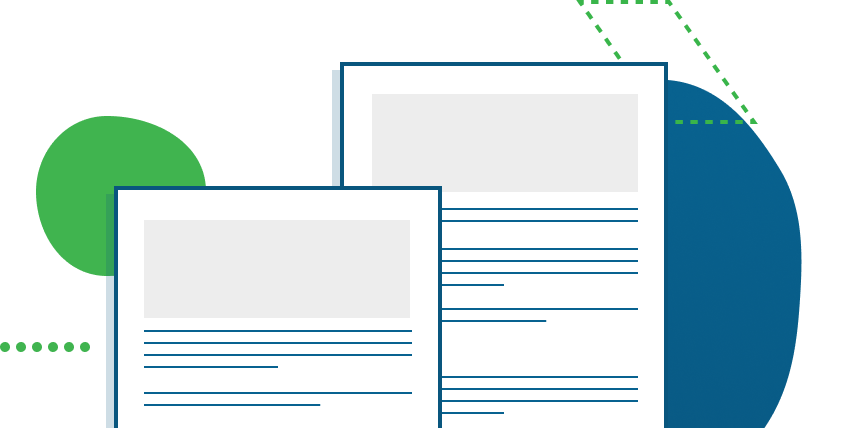written by Michele Gobbo, Excellence Innovation’s Designer
Generative AI is redefining the contemporary design landscape. Contrary to fears of replacing professionals, AI is proving to be a powerful ally that amplifies the creative capabilities of designers and democratizes access to innovation within organizations.
The evolution of the design process in the AI era
Traditional design often follows linear and predictable paths, guided by designers’ previous experience and consolidated habits. The integration of generative AI allows us to break these patterns, introducing a more exploratory and unconventional approach. Designers can now rapidly expand the space of possibilities, generating and evaluating numerous alternatives in a fraction of the time previously required.
This paradigm shift transforms the design process from an activity primarily based on individual intuition and experience to a continuous dialogue between human and artificial intelligence. The designer is no longer just the executor of ideas, but becomes a curator and director who guides creative exploration, selecting and refining the most promising solutions generated in collaboration with AI.
The early stages of ideation particularly benefit from this synergy. AI can quickly generate variations on a theme, explore unexpected combinations of elements, or propose solutions that challenge established conventions. This allows designers to discover previously inaccessible opportunities for innovation and gain new, unconventional insights.
New dynamics in design teams
The introduction of generative AI into design teams is creating new collaborative dynamics and professional roles. Traditionally, design teams could be limited by skill hierarchies and technical specialization. AI democratizes access to creative capabilities, allowing even less experienced members to contribute significantly to the ideation process.
Design teams are evolving towards more fluid structures where the ability to effectively dialogue with AI becomes a key skill. The role of the “designer-prompt” is emerging, the professional who knows how to formulate effective requests to AI to obtain quality and relevant results, currently a fundamental skill to fully exploit AI capabilities. At the same time, the importance of critical thinking and evaluation skills increases: knowing how to choose between multiple options becomes as crucial as generating them. Collaboration within teams is transformed: traditional brainstorming sessions are enhanced by AI, which can act as a neutral mediator between different creative visions, combining and synthesizing seemingly incompatible contributions. This reduces interpersonal friction and enhances the diversity of perspectives within the team.
A concrete example: in a design session for a new product or feature, instead of starting from a blank sheet of paper, the team can use AI to generate preliminary concepts based on different inputs from team members. This shifts the discussion from a competition of individual ideas to a collaborative evaluation of already concrete possibilities, accelerating and improving the process.
Strategic benefits for companies
Adopting an AI-enhanced design approach offers companies significant and measurable competitive advantages:
Accelerating time to market: The ideation and prototyping phases can be drastically compressed. What takes weeks of iterations can be explored in days or even hours, allowing companies to respond more quickly to market opportunities.
Expanding the value proposition: AI allows you to explore previously inaccessible solutions, creating products and services that significantly differentiate themselves from the competition. This allows companies to occupy new market niches or innovate existing solutions with new approaches.
Reduce Innovation Risk: AI enables a much larger number of alternatives to be virtually tested before committing significant resources. Teams can identify potential problems early and refine solutions, reducing the potential risk of new projects.
Democratization of innovation: AI breaks down barriers to entry into the creative process. Companies can involve a wider range of stakeholders, who supported by a studied creative process, have the opportunity to express ideas and feedback that would otherwise have remained unexpressed.
Compliance verification activities: Human intervention by compliance experts remains crucial, but AI-based tools can enhance and facilitate their work in verifying compliance, such as accessibility, bringing significant benefits to the company in terms of efficiency, product quality and inclusiveness.
Principles for effective integration
To maximize the benefits of AI in design processes, companies should follow some fundamental principles:
Hybrid and complementary approach: AI must be integrated as a partner to the designer, not as a substitute. The best results emerge when human intuition and the computational capabilities of AI work in synergy, each compensating for the limitations of the other.
Investment in skills: Continuous training of design teams is essential. Designers must develop new skills in prompt engineering and interpretation of AI results, as well as strengthen critical thinking, evaluation, and ethical judgment.
Continuous experimentation with new tools: The AI technology market is evolving rapidly, with new tools constantly emerging. Organizations must encourage and value active exploration of these new tools, dedicating resources to evaluating their potential impact on existing creative processes.
Conclusion
Artificial intelligence is profoundly transforming the way design is conceived and realized within organizations. Design teams that embrace this evolution can improve the creative process substantially, giving their companies a substantial competitive advantage.
The real opportunity lies not simply in adopting new tools, but in continuous experimentation, collective learning and openness to new working methodologies, which will define the products and services of tomorrow.
Organizations that invest in innovation will have a competitive advantage in a market increasingly driven by innovation and user experience.
